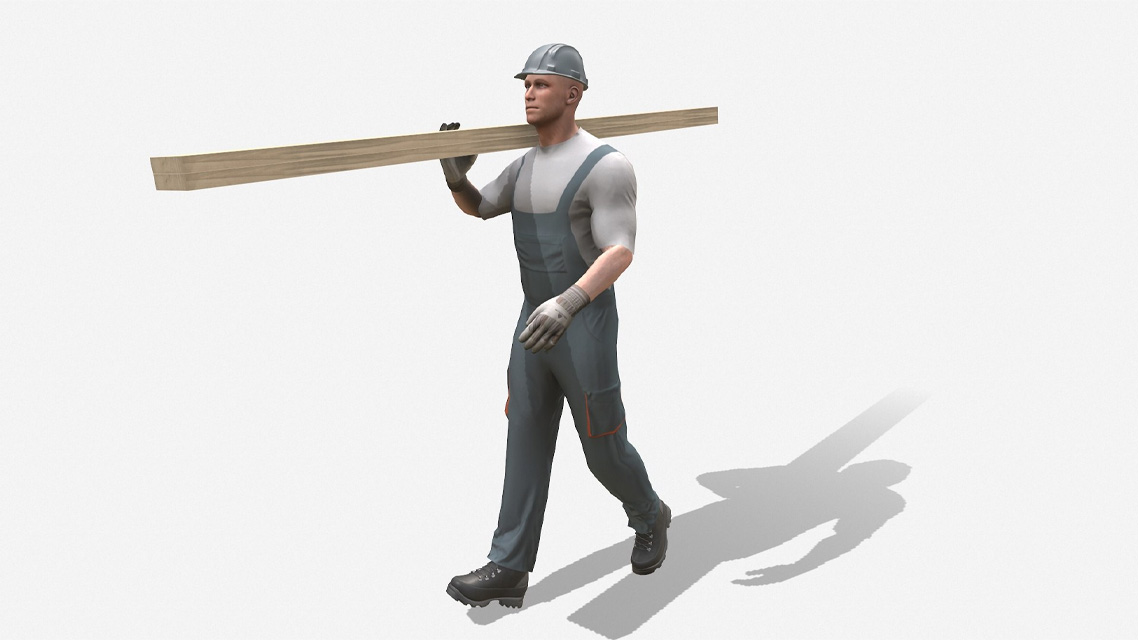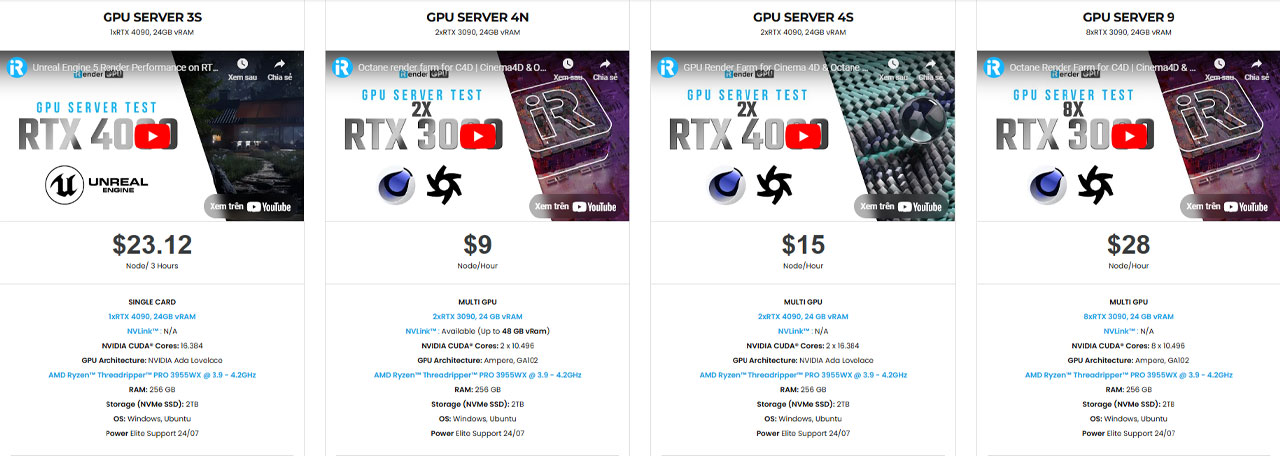Some essential tips for creating smooth Idle Animations
Idle animation is a subtle yet crucial aspect of animation in video games and filmmaking, particularly in 3D computer graphics. It’s the art of creating movement for characters even when they appear to be doing It involves bringing characters to life even when they seem to be doing “nothing.” Whether a character in a video game or a character in a dramatic cutscene in a movie, these animations help to keep the characters alive, interesting, and believable. Producers may enhance the narrative by improving idle animations, captivating viewers, and giving their characters personality.
To understand more about Idle Animation, iRender will discuss some tips in this blog!
What is Idle Animation?
Idle Animation is a character’s gentle movements or actions while the character is not performing any specific action, such as moving or attacking. These activities help to animate the character, making it appear more natural and engaging to the viewer. Idle animation is often used in video games, animated films, and graphics applications to make the character appear to still exist and interact with the environment, even when no major action is taking place.
Examples of idle animations across various media, including video games, movies, and animations. Here are some common examples:
- Breathing Animation: A character’s chest moves up and down to simulate breathing, often used to convey that a character is alive and present.
- Fidgeting: A character might tap their foot, shift their weight from side to side, or adjust their clothing, adding a sense of realism.
- Looking Around: The character may periodically turn their head or glance in different directions, as if they are observing their surroundings.
How is idle animation important?
Idle animations are important because they give characters more nuance and consistency. An extended period of stillness could make a hero seem dead, disrupting the sense of immersion. Nonetheless, a small change in posture or a quick glance around can make them seem real to the audience. In video games and movies, these minor gestures might convey preparedness, discomfort, or even conceit, strengthening the emotional bond with the audience or player.
Idle animations help make characters feel more lifelike. By incorporating small, natural movements, characters seem more realistic and relatable, mimicking the subtle actions of real people when they are not actively engaged in an activity.
- Character Development: Idle animations help to develop characters by revealing their personality traits and emotional states.
- Enhancing Realism: In animated films, well-crafted idle animations can create a sense of realism, making characters feel more lifelike. For live-action films, similar principles apply through the use of subtle body language by actors, enhancing their character portrayal.
- Visual Storytelling: Idle animations contribute to visual storytelling by adding depth to scenes. A character fidgeting, looking around, or reacting subtly to their environment can help to convey the narrative without relying solely on exposition or dialogue.
Tips for Creating smooth Idle Animations
Add personality
Adding personality is essential when creating idle animations. A character’s idle movement should reflect who they are. For example, a self-assured character may stand with their hands on their hips, smirking or changing their clothing. On the other hand, a timid character may avoid making eye contact, shift their weight uneasily, or fiddle with an object. Because of their distinctive movements, characters become recognizable and sympathetic, allowing viewers connect with them emotionally.
Keep animations subtle
While personality is important, it’s equally vital to keep animations subtle. Over-the-top movements can distract viewers and break immersion. Instead, focus on smaller, more natural actions like breathing, swaying slightly, or tilting the head. Adding secondary motion, such as the ripple of a cape or the bounce of hair, can enhance realism without overwhelming the viewer. In filmmaking, such subtlety ensures the character remains grounded in their scene, while in gaming, it prevents distractions during gameplay.
Reflect the character’s traits
Character characteristics or the setting of the story should also be reflected in idle animations. While a quirky inventor might test a device or adjust their goggles, a villain might move slowly and deliberately to express authority and threat. Animators are able to strengthen storytelling components by customizing animations to the character’s personality and environment.
Have smooth looping
Looping smoothly is crucial for idle animations. Particularly in games with a lot of idle animations, any discernible pause in the animation cycle can ruin immersion. Animators must carefully align the animation’s start and end frames to create a smooth loop. Using easing curves instead of linear motion ensures transitions feel natural, mimicking the ebb and flow of real-world movements.
Incorporate repetitive actions
A further useful strategy is to use little, repetitive movements. These can include light weight changes or finger taps. For example, a knight might repeatedly tighten their grip on a sword, or a sci-fi character could adjust a glowing gadget on their arm.
Tools and Techniques for Idle Animation
There are many capabilities available in animation software such as Blender, Maya, and 3ds Max for creating idle animations. Using rigging and timeline tools, animators may quickly try out different poses and transitions. Motion capture data offers a great foundation for realistic motions. Animators can improve mocap by making keyframes simpler or more dramatic to fit the character’s aesthetic. Software such as Adobe Animate or Spine can be used to produce smooth idle loops for game sprites in 2D animation.
Final Thoughts
Idle animations are vital to character animation in films and video games. They provide depth to characters, enhance storytelling, and create a more immersive experience for the audience. Using techniques that emphasize realism and emotional expression, animators can effectively breathe life into their characters during those moments of stillness.
iRender - The Best Cloud Rendering For Creating Idle Animation
Our iRender GPU Render Farm offers from 1/2/4/6/8 RTX 4090s and 8 RTX 3090 servers. All servers at iRender are also equipped with AMD Ryzen™ Threadripper™ PRO 3955WX @ 3.9 – 4.2GHz or AMD Ryzen™ Threadripper™ PRO 5975WX @ 3.6 – 4.5GHz, 256GB RAM, 2TB Storage NVMe SSD. The high-end configuration is extremely suitable for complex scenes.
You can refer some configuration of our servers following:
Besides, we also have flexible prices for all small to big projects. You can check out this video to estimate the cost with us:
We have an iRender GPU app for Windows PC which integrates all features and is easy to use.
In case you have any problems or questions, don’t hesitate to contact the 24/7 support team. We will be happy to help you with your questions and problems at all times.
This month, we are running a SPECIAL OFFER: 100% Additional Bonus for new clients who register an account and make a top-up within 24 hours after their registration.
Register an account today to experience our service or contact us via email at [email protected] or WhatsApp: at (+84) 912075500 for advice and support.
Happy Rendering!








